What comes to mind if you think about Korea?
Do you think about K-pop, K-drama, Korean stars and so forth?
It is said that there are more than 100 million people around the world who love Korean culture.
We would like to introduce a postcard of ‘Korean World Heritage’ to those who love Korea.
This postcard consists of 12 Korean heritage designated by UNESCO- <Jikji>, <Hunminjeongeum Manuscript>, Kimjang, Ssireum, Arirang, Pansori, Gochang·Hwasun·Ganghwa Dolmen Sites, Seokguram Grotto and Bulguksa Temple, Jongmyo Shrine, Changdeokgung Palace Complex, Jeju Volcanic Island and Lava Tubes and Getbol. In particular, <Jikji> is the oldest extant book printed with movable metal type in the world. It is considered as one of the greatest inventions that has changed the history of humankind. <Jikji> was published in 1377, 78 years prior to the <Gutenberg Bible> printed in 1455 in Germany. Other ones are also precious cultural heritages that embody the identity and wisdom of Koreans.
We hope that the ‘Korean World Heritage’ postcard will be a meaningful gift for people around the world to get interested in the Korean history and culture. Furthermore, we also hope that this interest can play a role in interacting with Korean friends and enjoying Korean history and culture. How about meeting Korean people, the main characters of Korean history and culture?
→ Friendly Korea Community, VANK | www.prkorea.com
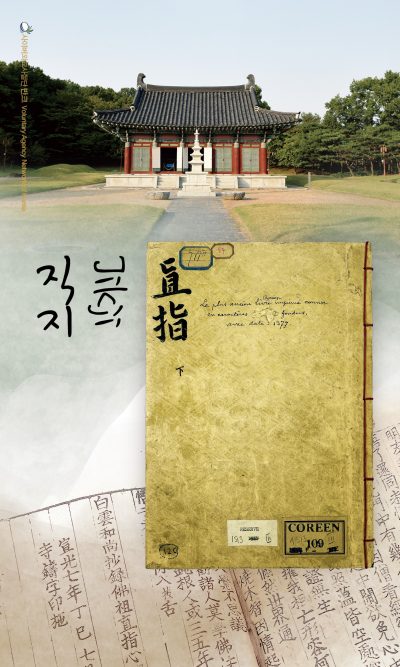 Jikji is the oldest extant book printed with movable metal type in the world. It was published at Heungdeoksa Temple in 1377 during the Goryeo Dynasty (918-1392). It was not long that Jikji got known in the world. It became known when Dr. Park Byeong-seon (1929-2011), a Korean who was working at the National Library of France, introduced Jikji at the International Book Fair in 1972 after finding it in her working place.
Jikji is the oldest extant book printed with movable metal type in the world. It was published at Heungdeoksa Temple in 1377 during the Goryeo Dynasty (918-1392). It was not long that Jikji got known in the world. It became known when Dr. Park Byeong-seon (1929-2011), a Korean who was working at the National Library of France, introduced Jikji at the International Book Fair in 1972 after finding it in her working place.
Jikji surprised people in the world. It is because it had been before known that metal type was invented by Gutenberg in Germany and the oldest book printed with the type was the ‘42-line Bible’ published by him. How could the Goryeo Dynasty publish books with metal type for the first time in the world? Korea has developed a printing culture from the old days. At least before the year of 751, the world’s oldest woodblock print, Mugujeonggwang Daedaranigyeong (Spotless Pure Light Dharani Sutra, was printed, and the casting technology for making metal type and manufacturing technology for paper and ink had been already developed in the Goryeo Dynasty when Jikji was published. Particularly, the intellectual class wanted the fast distribution of knowledge and information. Metal type technology was developed further in the Joseon Dynasty (1392-1910) after the Goryeo Dynasty. Hundreds of thousands of metal types were cast at a Joseon government office that specialized in type casting. Metal type technology has continued to develop throughout the era of Joseon, and the Annals of the Joseon Dynasty, one of the UNESCO Memory of the World, were also printed with metal type.
Documentary heritage is the wisdom of humankind to deliver the history, culture, thoughts and philosophy. UNESCO International Center for Documentary Heritage will be established in 2023 in Cheongju where the Jikji was published. Korea, that has continued its ancestors’ wisdom and technology through the documentary heritage, will play an important role in preserving and developing the documentary heritages in the world. Jikji is a creative Korean heritage, created with the wisdom of Koreans in the long history of the country.
 <Hunminjeongeum> was published in 1446 to announce the creation of a Korean unique script, ‘Hangeul’, and describe it. Meaning ‘the right sound to teach people’, Hunminjeongeum is not only the name of book, but also the initial name of Hangeul when it was created. Created by King Sejong (1397-1450) in 1443, Hangeul is a scientific, systematic and original script.
<Hunminjeongeum> was published in 1446 to announce the creation of a Korean unique script, ‘Hangeul’, and describe it. Meaning ‘the right sound to teach people’, Hunminjeongeum is not only the name of book, but also the initial name of Hangeul when it was created. Created by King Sejong (1397-1450) in 1443, Hangeul is a scientific, systematic and original script.
<Hunminjeongeum> is 20㎝-wide and 32.3㎝-long and was printed on woodblock. The book consists of a preface written by King Sejong himself and Hunminjeongeum Haerye written by eight scholars under the King’s order. King Sejong introduced the purpose of publishing the book and 28 new letters, and described how to combine them in the preface. In addition, the scholars explained in detail the principle of Hangeul and the way to use it by combining letters with examples. <Hunminjeongeum> was found in Andong in 1940. Until this book was found, there had been a lot of discussions on how Hangeul was created, but it became clear due to <Hunminjeongeum>. Nowadays, 24 letters of Hangeul is used out of the initial 28 letters as 4 letters have naturally disappeared.
It is unprecedented in the world history to create the letters and use them as the official script like Hangeul. Not only that, it is even more so to publish a book in order to describe the new letters. <Hunminjeongeum>, a record about the best cultural heritage – Hangeul – is a creative Korean heritage that was created with the wisdom and originality of Koreans.
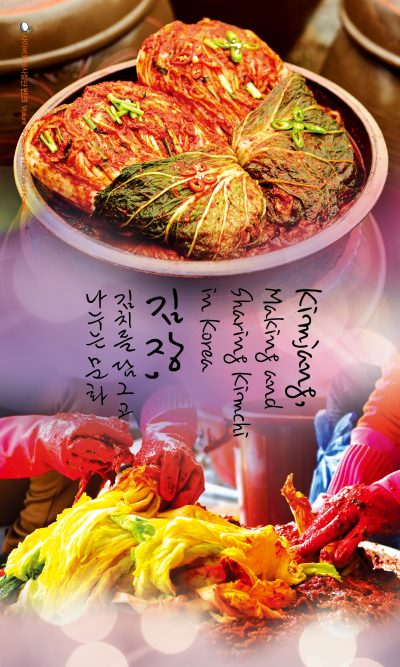 For Korean, Kimjang means to make a great amount of Kimchi in order to prepare for a long and cold winter. Kimchi is a fermented food made with various vegetables, such as radish, cabbage and cucumber, which is salted and seasoned. It is essential for Koreans’ meals.
For Korean, Kimjang means to make a great amount of Kimchi in order to prepare for a long and cold winter. Kimchi is a fermented food made with various vegetables, such as radish, cabbage and cucumber, which is salted and seasoned. It is essential for Koreans’ meals.
It takes a year to prepare for Kimjang. In spring, they procure seafood, such as shrimp and anchovies, for salting and fermenting. In summer, they acquire sea salt, which will be stored for a couple of years to remove its bitter taste. In late summer, red chilli needs to be dried and ground into powder. Finally, in late autumn, they set the date for Kimjang, considering the weather forecasts. In recent days, the process of preparation for Kimjang has been much simplified, but the culture of doing Kimjang remains unchanged.
Kimjang skills are usually succeeded by women in the family. The member of a family who is the most skilled and experienced transfers the knowledge and techniques of Kimjang to other members of the family or relatives. Therefore, making Kimchi varies in ingredients and methods. Kimjang is sometimes taught as a part of school curriculum. Children get used to Kimchi through Kimjang classes in kindergarten and professional cooking schools train Kimjang skills in a professional level.
Kimjang reminds us to live in harmony with nature. Through Kimjang, Koreans learn the knowledge on nature and the wisdom of living in accordance with its rhythm. In addition, Kimjang makes Koreans think of and practice sharing. In every season of Kimjang, various big and small events are organized all around Korea. Kimchi, made by thousands of people in these events, is donated to those who need it.
The food culture of Koreans contains not only the wisdom of living in harmony with nature, but the sharing spirit that makes them look around the neighbors in need. Kimjang, the custom of making and sharing Kimchi, is a Korean heritage that leads the community to communicate and harmonize.
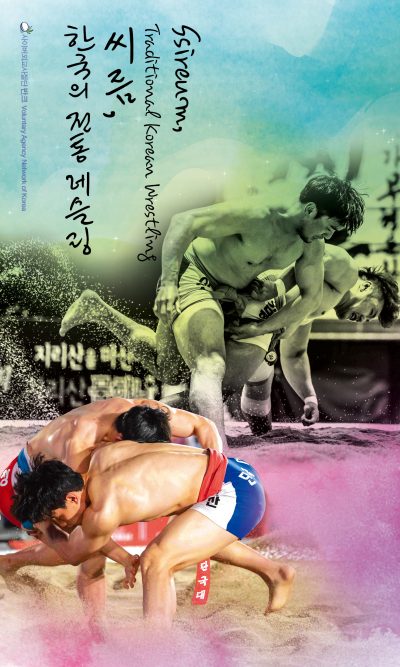 Ssireum is a unique sport in Korea. It is a traditional folk game and a sport competition that two people compete their strength and technique by gripping the Satba. Ssireum has been a folk game and a martial art that has been loved for a long time. It has developed into a modern athletic game in the 20th century.
Ssireum is a unique sport in Korea. It is a traditional folk game and a sport competition that two people compete their strength and technique by gripping the Satba. Ssireum has been a folk game and a martial art that has been loved for a long time. It has developed into a modern athletic game in the 20th century.
The history of Ssireum has been part of the long history of Korea. The scene of doing Ssireum was depicted at ancient tomb murals of Goguryeo (37 BC-AD 668) painted in the 4th and 5th centuries in present day Jilin Province, China. Moreover, a number of records about Ssireum created throughout Goryeo (918-1392) and Joseon (1392-1910) Dynasties have remained. There are records that kings of Goryeo personally played Ssireum with their subordinates in <Goryeosa> which is about the history of Goryeo, and there is a record that the government of Joseon prohibited Ssireum because it became overheated due to its popularity.
Ssireum was usually played in Korean anniversaries such as Dano, Baekjung, and Hangawi. Anybody could easily play it because it does not require special equipment and it has a low chance of injury. While there are various traditional types of Ssireum, they have been unified into one type called ‘Left Ssireum’, which is the one played at the present time. In general, Ssireum means the ‘Left Ssireum.’ There are 54 skills in Ssireum that are largely divided into four, based on the body parts – hands, legs, waist and mixed.
Ssireum trains the mind and body of individuals by using the whole body. Furthermore, it has traditionally strengthened solidarity and cooperation in the society. Korean Ssireum was designated as UNESCO Intangible Cultural Heritage as a common heritage between South and North Korea in October 2018. We hope that Ssireum will be a Korean heritage leading to communication and harmony between South and North Korea in the 21st century, as it has done in the long history of Korea.
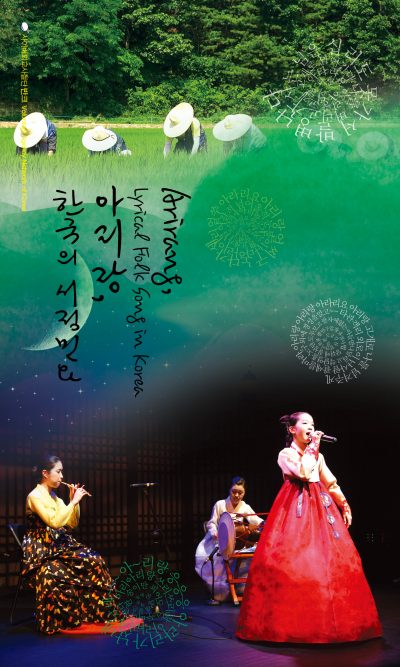 Arirang is a representative folk song in Korea. Even though nobody knows exactly who, when, and where it started, it has become a representative song of Korea.
Arirang is a representative folk song in Korea. Even though nobody knows exactly who, when, and where it started, it has become a representative song of Korea.
Arirang contains various emotions such as joy, anger, sorrow and pleasure that can be felt in the ordinary life. During the painful and harsh period of Japanese colonization (1910-1945), Arirang used to be sung by the independence army as their military song. Arirang consists of the common refrain called ‘Arirang arirang arariyo’ and narration that can be easily modified. The song can be changed in various ways because of its simple musical and literary composition. There are approximately 60 types, 3600 folk songs succeeded with the name of ‘Arirang.’
Each region in Korea has their own Arirang handed down. For example, there are ‘Seoul Arirang’ in the region of Seoul and Gyeonggi that is sung the most by Koreans, ‘Jeongseon Arirang’ in Gangwon-do Province, ‘Jindo Arirang’ in Jeolla-do Province, ‘Miryang Arirang’ in Gyeongsang-do Province, and so on. In each region, some organizations and heirs make a lot of efforts to make Arirang familiar with the public and pass it on to the next generation. Arirang is also famous abroad because 7.5 million Koreans living all over the world sing Arirang, representing their identity.
Arirang is a song made by Koreans over generations in the history of Korea. Besides, it is a song sung by all Koreans around the world. Arirang, containing the Korean identity and making Koreans unite regardless of generations and regions, is a Korean heritage that leads to communication and harmony.
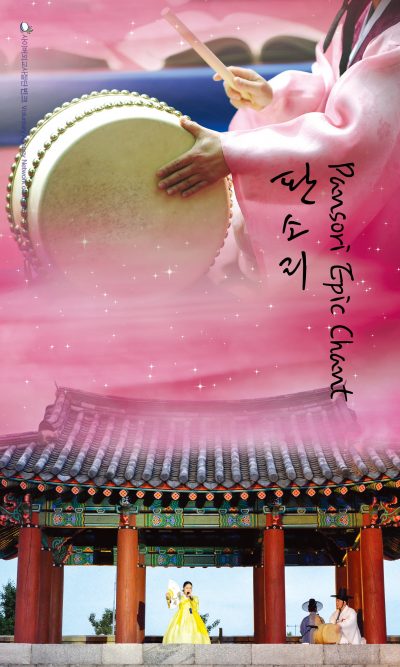 Pansori is a Korean traditional folk music. One ‘Sorikkun’ (means a vocalist in Korean), weaves a story by using songs, words, and gestures along with the beat of a ‘Gosu’ (means a drummer in Korean). Audiences actively join the performance by adding exclamatory words like ‘Eolssigu (means Yippee)’ and ‘Jota(means good).’
Pansori is a Korean traditional folk music. One ‘Sorikkun’ (means a vocalist in Korean), weaves a story by using songs, words, and gestures along with the beat of a ‘Gosu’ (means a drummer in Korean). Audiences actively join the performance by adding exclamatory words like ‘Eolssigu (means Yippee)’ and ‘Jota(means good).’
While not exactly known when Pansori began, it is generally assumed that it started in the 17th century, mid-Joseon Dynasty (1392-1910). Since then, Pansori had gained great popularity among all classes from elite to ordinary in the 19th century. A number of works have been created with improved artistic value and great Sorikkuns became famous as Myeongchang (means a master singer). There are five stories that have remained until this day, <Simcheongga>, <Chunhyangga>, <Heungbuga>, <Sugungga>, and <Jeokbyeokga>, and all Koreans know about the stories. Pansori is a comprehensive art. It involves music with the songs, literature with narratives, and play with its theatrical performances. For this reason, it is often compared with Western operas. While the performance of operas is a large scale with symphony orchestras, dance troupes and choirs on colorful stages, Pansori is performed by one Sorikkun and one Gosu only. Recently, it has been newly popular by collaborating with various genres of contemporary music.
It is said that Pansori contributed to the communication between high and low classes in the Joseon Dynasty by embodying the common life of the ordinary in music. We hope that Pansori will be a Korean heritage, globally introduced with the identity of Koreans in the 21st century, and making a contribution to the communication and harmony between Korea and the world.
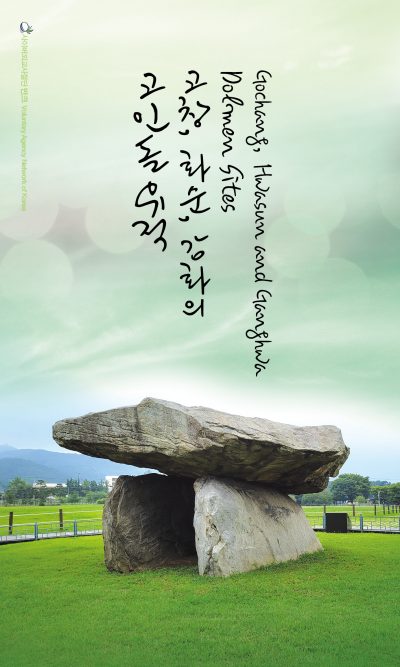 Korea is a ‘country of dolmens.’ A dolmen is a type of tomb constructed of large stones. While found all over the world, dolmens are mostly discovered in Korea, China and Japan. In particular, more than 40 percent of all dolmens in the world are located in the Korean peninsula, with the number of around 30,000 in the South and around 10,000-15,000 in the North.
Korea is a ‘country of dolmens.’ A dolmen is a type of tomb constructed of large stones. While found all over the world, dolmens are mostly discovered in Korea, China and Japan. In particular, more than 40 percent of all dolmens in the world are located in the Korean peninsula, with the number of around 30,000 in the South and around 10,000-15,000 in the North.
Out of all dolmens in Korea, the ones in Gochang, Hwasun and Ganghwa are especially famous. These dolmen remains are well-preserved, located close to each other, and formed in various ways. There are 447 dolmens in Gochang situated in an area of about 1.8㎞ along the foot of a mountain, which are the densest in the world and vary in terms of form and size. The Hwasun Dolmen are densely concentrated with 597 dolmens in an area of about 5㎞ along the valley. There are a variety of forms of dolmens, dozens of over 100 tons and some even reaching 280 tons. Above all, the quarry of dolmens found together with dolmens shows their construction process. The Ganghwa Dolmen is situated at a higher level than other dolmens in Korea and contains the biggest and greatest table-type dolmens. In general, while the table-type dolmens are situated in the central and northern parts of the Korean peninsula, the dolmens without stone props or with small ones are found in the southern region, like Gochang and Hwasun.
Similar to dolmen, structures of megalithic culture created with giant stones are found all over the world. The megalithic remains contain a variety of stories that humans do not know. Gochang, Hwasun and Ganghwa Dolmen Sites are valuable Korean heritages that also stimulate curiosity and imagination.
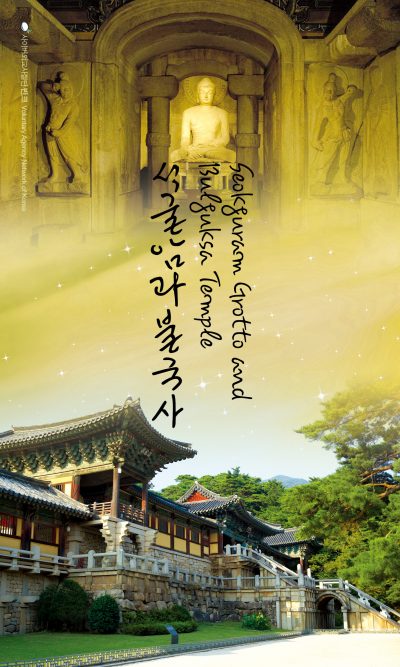 Seokguram Grotto and Bulguksa Temple are Buddhist relics built in the 8th century during the Silla Dynasty (57 BC-AD 935) of Korea. Seokguram is a grotto that enshrines a monumental statue of Buddha and Bulguksa is a Buddhist temple. As situated in Mt. Tohamsan in Gyeongju which was the capital of the Silla, both relics were built by the same person in a similar time.
Seokguram Grotto and Bulguksa Temple are Buddhist relics built in the 8th century during the Silla Dynasty (57 BC-AD 935) of Korea. Seokguram is a grotto that enshrines a monumental statue of Buddha and Bulguksa is a Buddhist temple. As situated in Mt. Tohamsan in Gyeongju which was the capital of the Silla, both relics were built by the same person in a similar time.
Seokguram is an artificial grotto made of about 360 stones. It comprises a square antechamber, a main rotunda, and a corridor connecting the two rooms. Various Buddha statues are elaborately carved on each wall and the main statue of Buddha is situated in the center of the rotunda. The 3.5m-high main statue portrays the enlightenment moment of Sakyamuni. Seokguram shows not only the high level of artistry, but the scientific and technical skills of the Silla people. It is even surprising now to see the dome-shaped ceiling made of square stones, and also the perfect system of natural ventilation, lighting, and management of temperature and moisture.
Bulguksa Temple embodies the world of Buddhism with architecture. A series of wooden buildings are harmoniously placed on artificially raised stone terraces. The Dabotap (Pagoda of Bountiful Treasures) and Seokgatap (Pagoda of Sakyamuni) are situated in the front yard of the Daeungjeon, the main building of Bulguksa. The Dabotap is intricate but splendid, and the Seokgatap has a simple but dignified design. In particular, it surprised the world when the world’s oldest woodblock print, Mugujeonggwang Daedaranigyeong (Spotless Pure Light Dharani Sutra), was found inside the Seokgatap in 1966.
It is considered that Seokguram and Bulguksa are the worldwide masterpieces of Buddhism, created with the high-level artistry, and scientific and technical skills. Seokguram and Bulguksa are creative Korean heritages with outstanding originality and artistry.
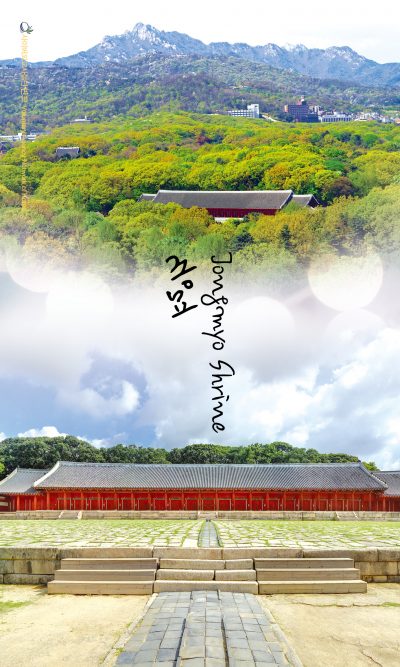 Jongmyo Shrine enshrines the spirit tablets of the kings and queens of the Joseon Dynasty (1392-1910). The Joseon Dynasty held memorial ceremonies for the ancestors of the royal family, by taking Confucianism as its ruling ideology and adopting the Jongmyo system.
Jongmyo Shrine enshrines the spirit tablets of the kings and queens of the Joseon Dynasty (1392-1910). The Joseon Dynasty held memorial ceremonies for the ancestors of the royal family, by taking Confucianism as its ruling ideology and adopting the Jongmyo system.
The most important buildings within Jonhmyo Shirne are the Jeongjeon Hall and Yeongnyeongjeon Hall, where the spirit tablets are kept and the memorial ceremonies are held. As a place for ritual event, the buildings are built in simple and concise ways with minimum decoration, but solemn. While initially built with seven rooms to enshrine the tablets, Jeongjeon Hall has been expanded to 19 rooms due to the succession of the dynasty. It is 70m long just with the rooms for the tablets and 101m long including both small side rooms and Wollang, making it the biggest architecture in the world, out of wooden buildings built in the same period. Yeongnyeongjeon Hall was built in the same way as Jeongjeon Hall, with 16 rooms for the tablets.
As the shrine dedicated to the ancestors, Jongmyo has separate doors and roads for souls to enter and exit. The doors and roads were not allowed to be used even by kings, and could only be used to carry the tablets or ritual supplies for the ceremonies. The countries taking the Confucianism as their ruling ideology mostly adopted the Jongmyo system, but no country has succeeded related architecture and ritual ceremony. The ancestral worship rites are still annually carried out in Jongmyo in Korea together with the accompanying traditional ritual music and dance.
Confucianism has been dominant for thousands of years in Asia such as Korea, China, Japan. Jongmyo is the only place in the world where the origin of Confucian Jongmyo Jerye can be seen. Jongmyo in Korea is a valuable heritage not only for Korea, but also for the world.
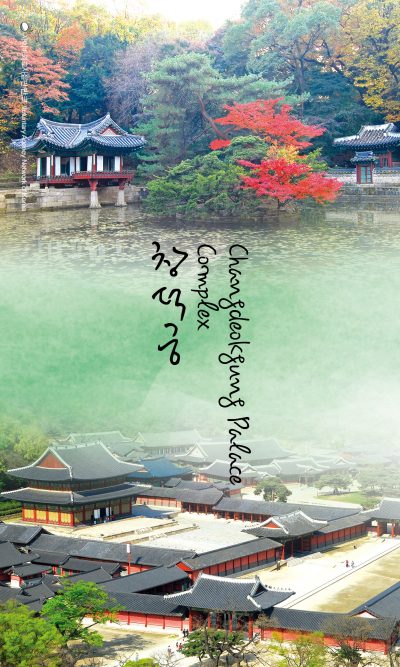 Changdeokgung is a palace of the Joseon Dynasty (1392-1910) located in Seoul. Out of five palaces of the Joseon Dynasty in Seoul, Changdeokgung Palace was secondly constructed in 1405 following Gyeongbokgung Palace. Although originally built as a secondary palace to the main palace of Gyeongbokgung, Changdeokgung Palace had accommodated the kings for the longest period in Joseon history.
Changdeokgung is a palace of the Joseon Dynasty (1392-1910) located in Seoul. Out of five palaces of the Joseon Dynasty in Seoul, Changdeokgung Palace was secondly constructed in 1405 following Gyeongbokgung Palace. Although originally built as a secondary palace to the main palace of Gyeongbokgung, Changdeokgung Palace had accommodated the kings for the longest period in Joseon history.
Changdeokgung Palace shows the feature of Korean palace architecture, which makes harmony between nature and architecture. It is situated at the foot of a mountain range without much flat land. Putting emphasis on the harmony with nature, Korean people placed the palace buildings in the south which is the flatland and the palace garden in the north which is the hill, utilizing the irregular terrain without changing it. For the same reason, the palace building in the southern area were flexibly situated in accordance with the natural terrain. Direction needs to be changed twice to reach Injeongjeon, the central building of the palace, from Donhwamun, the main gate of Changdeokgung Palace. This is the feature of Changdeokgung Palace to blend harmoniously with surrounding landscape, which makes it distinguished from conventional palace architecture.
Changdeokgung Palace is divided into four broad parts; the entrance part which includes the main gate of the palace, the official area where kings worked, the private area where the royal family lived, and lastly, the garden that accounts for more than 60 percent of the total area of Changdeokgung Palace. The garden is called ‘Huwon(Rear Garden)’, which was made in the way that allows the nature to stay unchanged and uses artificial means as less as possible. There are small and simple pavilions, lakes and others, well harmonized with the nature. Valuing the beauty of nature is a feature of Korean traditional garden.
Changdeokgung Palace is an exceptional example of the design of architecture and gardens in Northeast Asia. Changdeokgung Palace is a creative Korean heritage, showing the feature of Korean palace architecture and landscaping that is in harmony with nature while following the conventional architecture of Confucian palace.
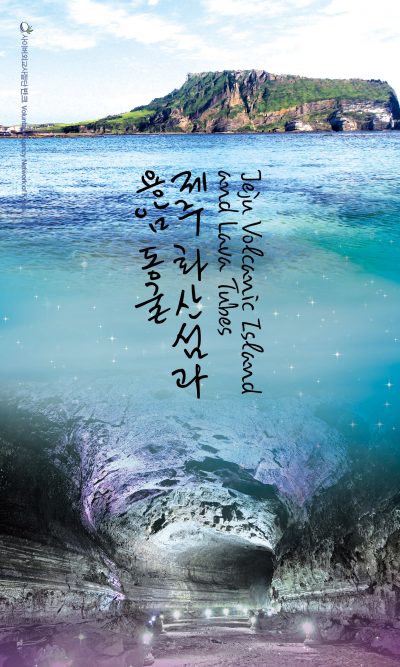 Jeju Volcanic Island and Lava Tubes show the geological history of the planet. Formed by volcanic eruptions, Jeju Island is full of a number of unique volcanic topography and beautiful scenery.
Jeju Volcanic Island and Lava Tubes show the geological history of the planet. Formed by volcanic eruptions, Jeju Island is full of a number of unique volcanic topography and beautiful scenery.
Hallasan Mountain is a typical example, which is 1,950m high and a volcanic mountain in the center of Jeju Island. A crater lake, called Baengnokdam, is at the summit, and there are various kinds of volcanic topography such as columnar-jointed cliffs and parasitic volcanos formed by the rapid cooling of lava. In addition, since the mountain covers from low to highland, its ecosystem is widely diverse. The area of Hallasan Mountain is preserved as a national reserve. Another example is the Geomunoreum (456m) and lava tube caves. In Jeju Island, there are 368 small-sized parasitic volcanoes, which are called ‘Oreum’ in the dialect of Jeju. The Geomunoreum is located in the northeast of Jeju. The lava that erupted from the Geomunoreum flowed along the surrounding areas creating a series of lava tubes such as Manjanggul, Gimnyeonggul, Bengdwigul, Dangcheomul Cave, Yongcheon Cave, etc. Each cave is unique and varies from each other in length, structure, and components. The last example is the Seongsan Ilchulbong (179m) located in the eastern end of Jeju, created by volcano eruptions under the sea. Its crater is huge with 570m of diameter and 90m of depth. The outer wall around the crater is very steep, and clearly shows the internal structure of the volcano due to the erosion of waves, which is very important to understand the formation process of a volcano.
‘Hallasan Mountain Natural Reserve’, ‘Geomunoreum Lava Tube System’, and ‘Seongsan Ilchulbong Tuff Cone’ are the typical examples of various volcanic topography in Jeju Island. It is the only place in the world where such diverse volcanic topographies are shown in a small-sized area. Jeju Volcanic Island and Lava Tubes are valuable Korean heritages that show the geological history of the Earth.
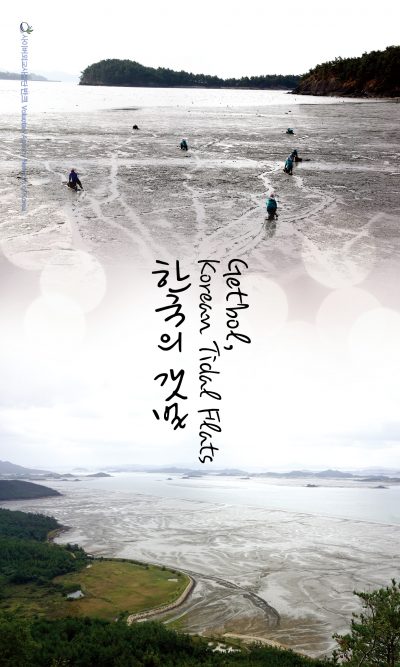 Getbol is widely situated on the western and southern coast of the Korean peninsula. Getbol is a flat area along the coast that is submerged at the flow and exposed at the ebb of each tide, which is a depositional landform created by fine soil carried by the tidal current for a long time.
Getbol is widely situated on the western and southern coast of the Korean peninsula. Getbol is a flat area along the coast that is submerged at the flow and exposed at the ebb of each tide, which is a depositional landform created by fine soil carried by the tidal current for a long time.
The size of Korean Getbol is 2,489㎢ and there are four most famous ones – Seocheon Getbol (Seocheon, Chungcheongnam-do), Gochang Getbol (Gochang, Jeollabuk-do), Shinan Getbol (Shinan, Jeollanam-do) and Boseong-Suncheon Getbol (Boseong and Suncheon, Jeollanam-do). Other than being a basic source of livelihood for Korean people, Getbol has also been a habitat for a number of species flora and fauna for a long time. The site hosts a total number of 2,150 species, including 118 of water birds, 857 of macrobenthos, 375 of benthic diatoms, 152 of marine algae, 55 of halophytes, 54 of fish, etc. Out of those, some species are endangered and some are Korean endemic. There are 22 species of water birds and 5 of marine invertebrates listed on the Red List of the International Union for Conservation of Nature (IUCN), and 47 endemic species including Tiger crab, and other rarities. In particular, Korean Getbol plays a role as an intermediate stop which is important for migratory birds traveling between East Asia and Oceania.
The value of Korean Getbol was little known in the past. However, it is now newly acknowledged with its various functions and high value. Korean Getbol is a valuable Korean heritage that has long been a base of livelihood for Koreans and a habitat for a great variety of species, and moreover, protects the global ecosystem today.

